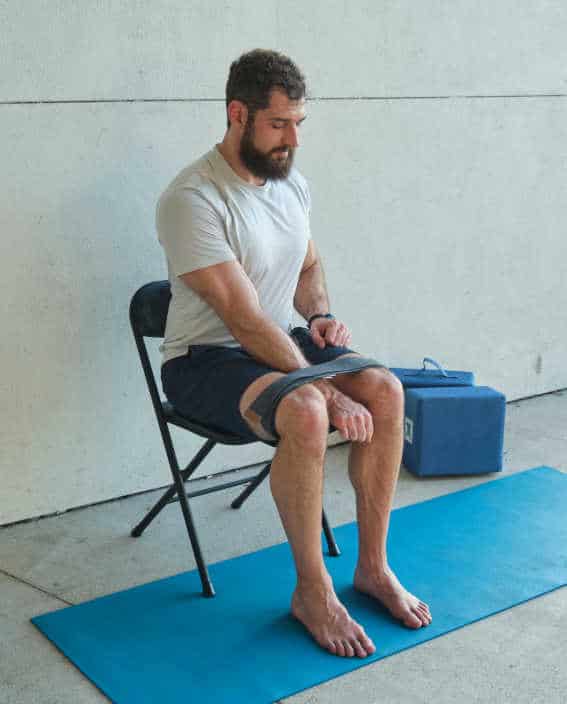Sitting is a Sport

So it’s 2021, and we are all sitting more than ever. 18 years ago research started to come out warning us of the effects of sitting, and we sat down to read it and then never got up. We are looking at all sorts of issues, too many to make a comprehensive list in this modest blog post.
- Poor posture is associated with increased interdiscal pressure
- Poor posture reduces cerebrospinal flood flow
- Sitting excessively is associated with increased mortality
- Sitting excessively increases chance of heart disease
- Sitting excessively (with a c curve) stiffens the neck and shoulders
- Pelvic asymmetry is associated with discomfort related to sitting
- Circulation suffers when sitting
- Nervous system activity suffers when sitting
- Slouching and poor posture is associated with a poor attitude
Your body is specialized for whatever you do, whether you’re a professional athlete, a long distance runner, a professional netflixer, a mother, a crossfitter. Literally ANYTHING produces a supportive adaption, or a trimming of what is no longer needed. Sitting is a sport! You must train for it, support your success, and train intelligently. I propose that our bodies are ALWAYS adapting to what we do and how we do it, to support us, it’s the natural response. I propose that anyone can be a specialized athlete for anything. I propose further that sitting is a sport that EVERYONE plays and that almost no one is training for.
We aren’t going to stop sitting anytime soon, in fact we will probably keep doing it more. So we have to ask, can we sit better? Can sitting be more functional and less detrimental? The short answer is, yes absolutely.
A vast majority of Americans are sitting between 4 to 8 hours a day while working, and more while at home. 2 – 4 hours of daily sitting is enough to incur deleterious health effects, imagine how bad it really is out there!!
How can we prepare ourselves to sit? There are some key positions here in the body that we can look at.
Hip hinge
Spine Bracing
Lat/Pec support
Diaphragmatic breathing
Pelvis Position/Pelvis support
Foot placement
Symmetry
Equipment choices
Assist implements
Hip hinge – if your hips are not hinging well, stiff, imbalance, it is going to make sitting a lot more stressful on your body in ways that will add up quickly. Practicing your hip hinge will effect your sitting position positively.
Spine Bracing – if your spine is not flexible enough to manipulate or lacks strength and stamina in the braced neutral position, this is a great area of focus. Pressure on your discs and spine increases in poor posture, a nice stack is ideal.
Lat/Pec support – Your lats are huuge muscles, and they help determine your shoulder position along with your pecs. I myself had very dysfunctional lats until the last year or so. They can help your spine maintain a good position when utilized, and help take some stress from the neck and shoulders. Great thing to focus on when training to sit.
Diaphragmatic breathing – poor posture will inhibit this all together, when you are slouched you aren’t able to breathe fully and over time this will affect your ability to move your ribs with your breath and breathe more deeply than your chest. Doing breathing exercises will help your body adapt to sitting better.
Pelvis Position/Pelvis support – Study has shown that imbalance pelvic position is associated with more discomfort and pressure on the spine, managing your posture and sitting (even exercising) with your strap equipped will help your body significantly.
Foot placement – placing your feet flat, and under your knees (not in front or behind) will reduce the sheer force on your knees and support a good posture, sitting with poorly placed feet can be a huge issue for people (crossing your legs!), and lead to issues own the road.
Symmetry – Sitting unevenly will cause an uneven response from the body, progressing to a point where symmetry can’t be achieved in any position if your body fully adapts to that, and it will take some time and effort to get that undone!
Equipment choices & Assist implements – Chair choice, desk choice, wearing a strap, pads, cushions etc. All of parts of your work/work sitting environment play a role in your posture, comfort, and the detriment of sitting.
Sitting with a strap is a HUGE buffer to the damages of sitting, it will support many things about your posture, nervous system, pelvis etc. I will go into detail on this in a future article, expect 3 or 4 about sitting!
https://www.sciencedirect.com/science/article/abs/pii/S1356689X08001136?via%3Dihub
Sitting posture undefined
https://www.sciencedirect.com/science/article/abs/pii/S1356689X08001136?via%3Dihub
Intradiscal pressure
https://www.sciencedirect.com/science/article/abs/pii/S0030589820312050
Sitting with good posture reduces spine load
https://europepmc.org/article/med/26378942
Breaking up sitting is good, it varies from person to person
https://www.tandfonline.com/doi/abs/10.1080/00140138608967266
Total curve is not ideal
https://www.ncbi.nlm.nih.gov/pmc/articles/PMC5618737/
Sitting is bad general
https://onlinelibrary.wiley.com/doi/abs/10.1002/cpp.1890
Slumpy people are more negative
https://onlinelibrary.wiley.com/doi/abs/10.1002/cpp.1890
Pelvic asymmetry messes with sitting
https://content.iospress.com/articles/work/wor1901
Posture Education for children is recommended
https://www.liebertpub.com/doi/abs/10.1089/act.2015.21206?journalCode=act
Sitting Kills
https://www.bls.gov/ors/factsheet/sit-and-stand.htm
How much we really sit

